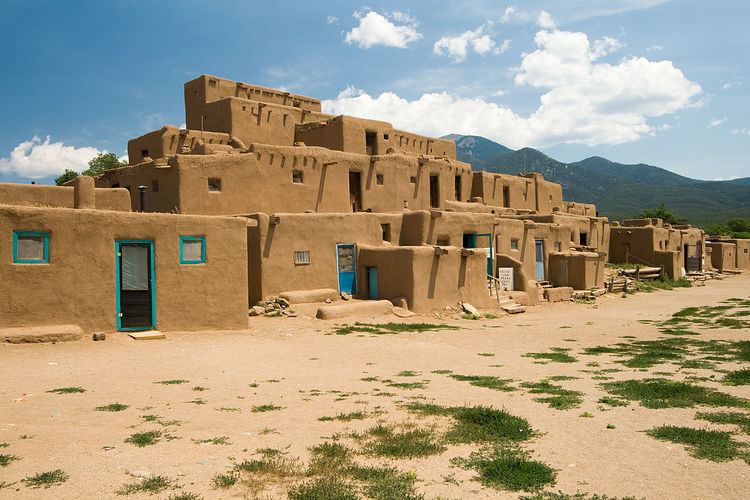 | ||
The Pueblo IV Period (AD 1350 to AD 1600) was the fourth period of ancient pueblo life in the American Southwest. At the end of prior Pueblo III Period, Ancestral Puebloans living in the Colorado and Utah regions abandoned their settlements and migrated south to the Pecos River and Rio Grande valleys. As a result, pueblos in those areas saw a significant increase in total population.
Contents
- Architecture
- Communities
- Spanish colonization
- Culture and religion
- Agriculture
- Pottery
- Other material goods
- Cultural groups and periods
- References
The Pueblo IV Period (Pecos Classification) is similar to the "Regressive Pueblo Period" or, referring to the Ancient Pueblo People of Colorado and Utah, the "Post Pueblo Period."
Architecture
Puebloan villages in Arizona and New Mexico had multi-storied pueblos of up to a thousand clustered rooms. The New Mexico villages were generally larger than those of western region, which had large plazas with long, rectangular kivas.
Communities
The great migration out of Colorado and Utah at the end of the Pueblo III Period resulted in an influx of people into the Rio Grande and Little Colorado River valleys. Within Arizona and New Mexico there was an aggregation of people from outlying sites to larger pueblos. The puebloan territory of the Pueblo IV Period also included the White Mountains, Verde Valley, Anderson Mesa, and Pecos areas.
Spanish colonization
An upsurge in the lifestyle of the Rio Grande valley residents in the beginning of the Pueblo IV Period was tempered by the 16th century Spanish colonization of the Americas which extended north into New Mexico. Don Juan de Onate, the colonial governor of the New Spain province of New Mexico, led 400 soldiers and farmers in 1598 to establish settlements into the Rio Grande valley area.
Culture and religion
Agriculture
Sites were located next to reliable water sources which were often used to irrigate farm land. Gardens were established in terraces and stone-outlined "waffle gardens" near the pueblo. Once harvested, maize was ground using manos and metates. The presence of griddle stones hints at the creation of baked paper-like cornbread.
Small game and birds were hunted or trapped and seasonal wild plants were gathered to supplement the diet:
Pottery
Plain surfaced pottery replaced the corrugated pottery of the Pueblo II and III Periods. Red, yellow and orange ware and polychrome (multiple-colored) pottery replaced black-on-white pottery of the previous pueblo periods. The pottery was often mass-produced, high quality pottery, and in the case of the western Anasazi, included Kachina figure and symbol designs. Glazed pots, created when mineral paints on the pottery surface were fired at high temperatures, emerged in the Anasazi pueblos. Artisans in the Petrified Forest created sophisticated Glaze-on-Red polychrome pottery.
Other material goods
Emerging material goods during this period were small triangular projectile points and piki stones for making bread.
Cultural groups and periods
The cultural groups of this period include:
